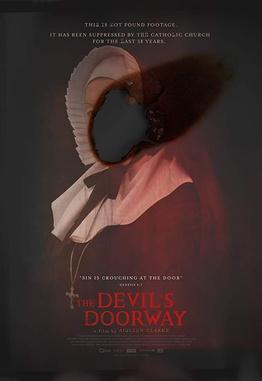Critics who complain that Aislinn Clarke’s The Devil’s Doorway has nothing new really have no appreciation for parables. An Irish found-footage film, The Devil’s Doorway is, as it clearly states, a lament over the Magdalene Laundries in Ireland. I’d never heard of these institutions that existed until less than 30 years ago. Founded by the Catholic Church, these “asylums” were places where women in trouble were essentially treated as slave labor. Women, who often have difficulty hiding the results of sexual promiscuity (something men more easily get away with), were put to work in these reformatories. I don’t know if the conditions were as bad as presented in the movie, but they provide a springboard into a perfectly serviceable horror film. The horror tropes may be familiar, but that’s true of most horror of these days.

Two priests are sent to a Magdalene Laundry to investigate a reported miracle of a bleeding statue of Mary. Please pardon my invocation of Alice Cooper here, but “Only Women Bleed” would be appropriate to consider. Fr. Thomas, older and skeptical, doesn’t believe in miracles while Fr. John, the “techie” (it’s set in 1960) films the proceedings. The priests uncover layer after layer of hypocrisy and deceit. The Mother Superior, who shows no deference to the priests, insists that many of the pregnant women that have passed through the asylum were impregnated by clergy. But there’s more. As the statues bleed, a young woman, a pregnant virgin, is found kept in a dungeon. Ghosts of murdered children cavort through the night. A satanic niche for a black mass is discovered. And the pregnant virgin is also possessed by a demon. There’s a lot going on here.
To mistake all of this as “just a horror movie” is to miss the point. Such is the way with parables. Clarke, the director, was an unwed mother at 17 who realized that, had this happened a few years earlier, she could well have found herself confined to a Magdalene Laundry. The movie doesn’t, it seems to me, condemn Catholicism per se. For example, the two priests documenting the activities seem to be good people. Fr. Thomas, as it turns out, had been born in this selfsame institution. Raised as an orphan, he became a priest who, not surprisingly, doesn’t believe in miracles. He too, was a victim. Religious horror serves many purposes. Often the very unfamiliarity of religion itself can drive the fear. Another purpose, however, is to educate. The Devil’s Doorway educated me, and I appreciate the parable.
